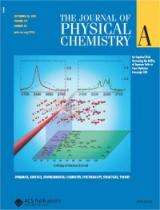Water's choice: A tale of two numbers and the order they predict

(PhysOrg.com) -- Well-ordered structure or chaotic jumble? That's the choice when water is mixed with a salt and cooled down. Now, thanks to a rule discovered by scientists at Pacific Northwest National Laboratory and the Technical University of Munich, predicting the structure of a frozen mixture of various salts and water is as easy as comparing just two numbers.
The rule, simply put, compares two numbers. The first is the amount of energy that is released when a particular salt is dissolved in water. The second number is the amount of energy it takes to melt ice into regular water. If the first number is smaller than the second, a highly structured hydrate forms. Otherwise, salt and water won't mix together, but will be separated in their ordered forms.
"We tested the rule against 75 different types of salts, which was everything we could find in the literature," said Dr. Sotiris Xantheas, a theoretical chemist at PNNL. "And it correctly predicted the outcome each time, as verified by laser experiments."
This rule provides insights into the behavior of water, the most ubiquitous solvent on the planet. By being able to quickly determine how water arranges itself in ordered environments with different salts, scientists can learn more about the properties of water at the molecular level. This is important to understand its relevance in many chemical and biological processes that are related to energy, catalysis and environmental remediation. "This rule really opens up new ideas about how salts form hydrates," said Xantheas.
As in discovering any new rule, the scientists wanted to see if it applied to more than a handful of cases. So, they devised a series of tests in Germany and the United States. The German team mixed various salts with water and cooled them to access their ordered structures. Then, they used infrared spectroscopy looking for the "smoking gun" to determine whether the salt formed a hydrate. The calculation of the spectra, performed in the United States, matched the experiment and offered additional insight into the correlation between structure and spectra in those ordered environments. The collaboration started during Xantheas' visit to the Technical University of Munich last summer as part of his Alexander von Humboldt Fellowship.
Xantheas and his collaborators, including Jasper Werhahn, who is coming to PNNL for 3 months under a Max Planck Fellowship to perform calculations, are continuing to study the properties of those ordered aqueous environments.
More information: Pandelov S, JC Werhahn, BM Pilles, SS Xantheas, and H Iglev. 2010. "An Empirical Correlation between the Enthalpy of Solution of Aqueous Salts and Their Ability to Form Hydrates." The Journal of Physical Chemistry A 114(38):10454-10457. DOI:10.1021/jp106050r
Provided by Pacific Northwest National Laboratory


















